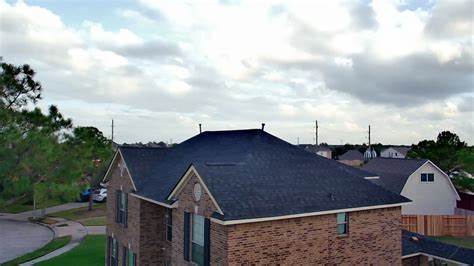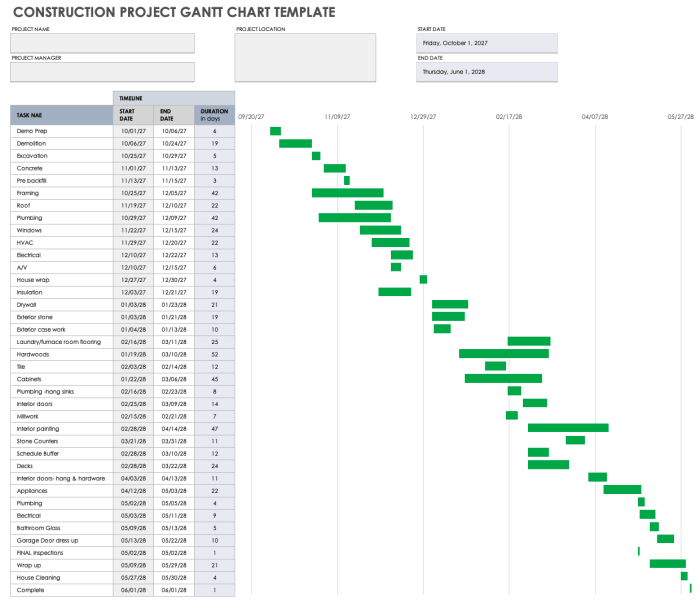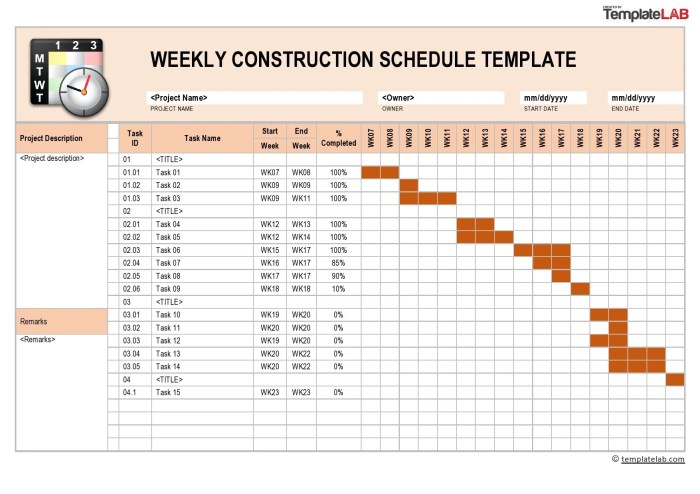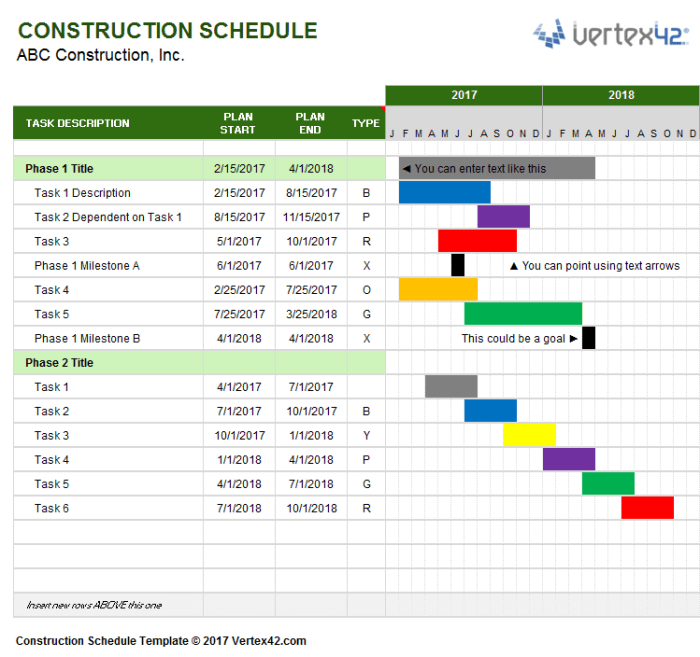Embark on the journey of Long Roofing Projects: Planning for Schedule and Budget, where we delve into the intricacies of managing timelines and finances for extensive roofing endeavors. Prepare to explore the crucial factors influencing project success and discover strategies for seamless execution.

 When it comes to long roofing projects, having a well-thought-out project plan and timeline is crucial for success. This helps ensure that the project stays on track, within budget, and is completed in a timely manner.
When it comes to long roofing projects, having a well-thought-out project plan and timeline is crucial for success. This helps ensure that the project stays on track, within budget, and is completed in a timely manner.
 When it comes to long roofing projects, budget allocation and cost management are crucial aspects that can make or break the success of the project. Properly allocating funds and effectively managing costs can ensure that the project stays within budget and is completed on time.
When it comes to long roofing projects, budget allocation and cost management are crucial aspects that can make or break the success of the project. Properly allocating funds and effectively managing costs can ensure that the project stays within budget and is completed on time.
 Selecting the right materials for a long roofing project is crucial for ensuring durability, efficiency, and cost-effectiveness. The choice of roofing materials can significantly impact the overall success of the project, affecting both the budget and timeline. Proper procurement strategies must be implemented to avoid delays, quality issues, and budget overruns.
Selecting the right materials for a long roofing project is crucial for ensuring durability, efficiency, and cost-effectiveness. The choice of roofing materials can significantly impact the overall success of the project, affecting both the budget and timeline. Proper procurement strategies must be implemented to avoid delays, quality issues, and budget overruns.

Factors Affecting Schedule and Budget
When planning for long roofing projects, it is essential to consider various factors that can significantly impact both the timeline and costs involved. Understanding these key factors can help project managers anticipate challenges and make informed decisions to ensure successful project completion within the set schedule and budget.Weather Conditions
Weather conditions play a crucial role in the planning and execution of roofing projects. Unpredictable weather patterns such as heavy rain, strong winds, or extreme temperatures can cause delays in work, affecting the overall timeline and budget. It is essential to account for potential weather-related interruptions and have contingency plans in place to mitigate their impact.Material Availability
The availability of roofing materials is another critical factor that can influence project scheduling and budgeting. Delays in the delivery of materials or shortages in supply can lead to project setbacks and increased costs. Project managers must work closely with suppliers to ensure timely delivery of materials and have alternative options in case of any supply chain disruptions.Unexpected Delays
Despite thorough planning, unexpected delays can still occur during long roofing projects. Issues such as equipment malfunctions, workforce shortages, or unforeseen structural problems can disrupt the project schedule and inflate the budget. It is vital to have a buffer built into the timeline and budget to accommodate any unforeseen circumstances that may arise during the project.Project Planning and Timeline
 When it comes to long roofing projects, having a well-thought-out project plan and timeline is crucial for success. This helps ensure that the project stays on track, within budget, and is completed in a timely manner.
When it comes to long roofing projects, having a well-thought-out project plan and timeline is crucial for success. This helps ensure that the project stays on track, within budget, and is completed in a timely manner.
Typical Timeline for a Long Roofing Project
Creating a detailed project schedule is essential for managing a long roofing project effectively. Here is a typical timeline from initial planning to completion:- Initial Planning Phase: This phase involves conducting a thorough assessment of the existing roof, determining project goals, and setting a budget. This can take anywhere from 1-2 weeks.
- Design and Permitting Phase: Once the planning phase is complete, the design and permitting phase begins. This includes obtaining necessary permits, finalizing design plans, and securing materials. This phase can last 2-4 weeks.
- Pre-Construction Phase: During this phase, preparations are made for the actual construction work to begin. This includes scheduling subcontractors, ordering materials, and preparing the site. This phase typically lasts 1-2 weeks.
- Construction Phase: The construction phase is when the actual roofing work takes place. This can vary greatly depending on the size and complexity of the project but typically takes 1-2 weeks for a residential roofing project.
- Final Inspection and Completion: Once the construction is complete, a final inspection is conducted to ensure everything meets building codes and quality standards. This phase can take 1-2 weeks.
Creating a Detailed Project Schedule
To create a detailed project schedule that accounts for different project phases, it is important to break down the work into smaller tasks and assign realistic timelines to each. Utilizing project management tools and software can help in organizing and tracking progress effectively.Strategies for Optimizing Project Timelines
While it is important to stay on schedule, it is equally crucial to maintain quality in workmanship. Here are some strategies for optimizing project timelines without compromising on quality:- Regular Communication: Keeping open lines of communication with all stakeholders can help in identifying and addressing issues early on, preventing delays.
- Efficient Resource Management: Properly allocating resources, such as labor and materials, can streamline the project timeline and prevent bottlenecks.
- Adaptability: Being flexible and able to adjust to unexpected changes or challenges can help in avoiding significant delays and keeping the project moving forward.
- Regular Monitoring and Evaluation: Continuously monitoring progress and evaluating the project timeline can help in identifying areas that need improvement and making necessary adjustments.
Budget Allocation and Cost Management
 When it comes to long roofing projects, budget allocation and cost management are crucial aspects that can make or break the success of the project. Properly allocating funds and effectively managing costs can ensure that the project stays within budget and is completed on time.
When it comes to long roofing projects, budget allocation and cost management are crucial aspects that can make or break the success of the project. Properly allocating funds and effectively managing costs can ensure that the project stays within budget and is completed on time.
Budget Allocation Process
- Start by creating a detailed budget that Artikels all the expenses involved in the roofing project, including materials, labor, permits, and any additional costs.
- Allocate funds based on priority, giving more budget to critical aspects such as quality materials and skilled labor.
- Consider setting aside a contingency fund for unexpected expenses that may arise during the project.
Cost Management Techniques
- Regularly monitor expenses to ensure they align with the budget. Use budgeting software or spreadsheets to keep track of costs.
- Negotiate prices with suppliers and contractors to get the best deals on materials and labor.
- Implement cost-saving measures such as recycling materials or opting for energy-efficient roofing solutions.
Implications of Cost Overruns
- Cost overruns can lead to delays in the project timeline and compromise the quality of work if corners are cut to save money.
- Mitigate cost overruns by identifying the root cause of the overspending and finding ways to reduce costs without sacrificing quality.
- Communicate openly with stakeholders about any budget changes and seek their input on cost-saving measures.
Material Selection and Procurement
 Selecting the right materials for a long roofing project is crucial for ensuring durability, efficiency, and cost-effectiveness. The choice of roofing materials can significantly impact the overall success of the project, affecting both the budget and timeline. Proper procurement strategies must be implemented to avoid delays, quality issues, and budget overruns.
Selecting the right materials for a long roofing project is crucial for ensuring durability, efficiency, and cost-effectiveness. The choice of roofing materials can significantly impact the overall success of the project, affecting both the budget and timeline. Proper procurement strategies must be implemented to avoid delays, quality issues, and budget overruns.
Comparison of Roofing Materials
- Asphalt Shingles:
- Cost-effective option for residential projects
- Moderate durability with proper maintenance
- Suitable for various climate conditions
- Metal Roofing:
- Higher initial cost but long-term savings on maintenance
- High durability and longevity
- Not ideal for extreme temperature fluctuations
- Slate Tiles:
- Expensive upfront cost but extremely durable
- Long lifespan with minimal maintenance
- Suitable for upscale residential or historical properties
Efficient Procurement Strategies
- Establishing relationships with reliable suppliers to ensure timely delivery
- Comparing quotes from multiple vendors to get the best prices
- Ordering materials in advance to prevent last-minute rushes and delays
- Monitoring inventory levels to avoid stockouts and project interruptions
- Implementing a strict quality control process for all incoming materials













